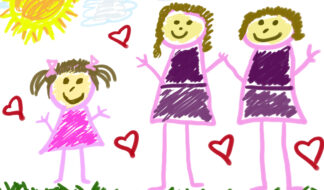by Jessica Carreras
In 2006, the Horizons Project, a program of the Children's Hospital of Michigan that focuses on providing care and help HIV positive and at-risk metro Detroit youth, was seeing a fair amount of youth in their program. They ran four Thursday clinics a month that focused on education, medical care, therapy and other services. Usually, one or two new youth would be identified as positive and join in any given month.
But since then, things have changed.
According to Project Manager Monique Green-Jones, they have seen 73 new clients come in in the past year and a half – almost double what they would expect.
Green-Jones called the increase "huge" and noted "we have been seeing a serious increase in the last 18 months in our client population."
The increase at Horizons is part of a larger trend that puts youth ages 13 to 24 as the second-highest group of new HIV infections in the state.
The Michigan Department of Community Health's report on HIV trends from 2002-2006 in the metro Detroit area notes that HIV infections have risen at a rate of about 4 percent a year, from 11.6 per 100,000 in 2002 to13.8 per 100,000 in 2006. The increase overall includes startlingly high jumps in rates among those ages 13-19 (14 percent) and 20-24 (11 percent).
The report notes that for the first time ever, rates were shown to have risen for persons ages 40-49 and those over 60 years of age.
It also states that 84 percent of all new teen and young adult infections are black.
For programs like Horizons, the report mirrors what they're seeing in their clientele. According to Green-Jones, the infected youth are "disproportionately shifting to men," most of whom, she said, are black MSM.
The Michigan Department of Community Health reasons that the increase is partially a result of the mandatory laboratory reporting that was implemented in 2005, although it notes that increases in testing efforts and a genuine increase in new infections have also played a part.
Community leaders working on the HIV/AIDS epidemic – some for almost 30 years – have their own take on what the causes of the increase are.
Horizons cited the government's push for LGBT youth to get tested. They have been working to do outreach to that group under a federal grant, including sending prevention messages in clubs, bars and chat rooms. "I think more youth, like young men who have sex with men, are being tested because that's where the CDC push has been for the past few years," Green-Jones said.
Others believe that the government isn't doing their part, leaving organizations with minimal funding to reach one of the most at-risk groups for HIV infection: young, black MSM.
"Agencies like MAPP that have specifically gone out and tried to find young MSM -specifically young African-American MSM – are doing a good job and getting them involved in testing," said Mark Peterson, head of the Michigan Positive Action Coalition group (MiPoz) for HIV positive people. "A lot of these guys didn't get tested before, and when they did wind up becoming HIV positive, it wasn't until much later in their disease process that somebody diagnosed them."
Many have also speculated that the numbers have been this high for years, and are only now being accurately reported by the CDC. "I think those numbers have been there, we just didn't know it," agreed Barbara Murray, executive director of AIDS Partnership Michigan. "I think part of it is that you have some strong HIV testing going on targeting young people."
One of the oft-cited reasons why the epidemic still rages on after over 25 years is homophobia.
According to Murray, it is the number one explanation for why infections are still rampant. "I think one of the things that makes it really difficult is a community that still does not put its arms around men who have sex with men, whatever color they are" Murray said. "Until we do that and recognize that this is a population that needs our love and support and not our anger and whatever other excuses we have, we won't stop this epidemic."
Likewise, Green-Jones notes that getting young MSM to admit that they're HIV positive is a huge barrier, thanks to social stigma against both homosexuality and the disease itself. "How do you get people to talk about being positive when they won't even talk about being gay?" she asked. "They're not going to talk about that. They're not going to tell anybody."
The homophobia reaches far beyond social barriers, affecting prevention and education in schools and federal monetary support for programs that target MSM. MiPoz, which works to enact policies that will funnel more money into HIV prevention. "We've had to deal with six years of policies that have moved away from doing prevention with the folks we really need to," Peterson explained. "Any time you take that pressure off, you shouldn't be surprised that those same at-risk communities wind up having more disease presence."
Peterson added that he hopes that the release of new numbers will provide groups like MiPoz with the necessary statistics to support their cries for funding increases. Still, he believes a positive message is needed to drive the point home – one that shows that programs like Horizons, MAPP and AIDS Partnership Michigan are working to drive infections down. "It would be very positive to say 'look where we're going – now we need policies and programs that support that,'" he said. "It would be nice to be able to say that with young African-American MSM, and I think we'll get there."
Getting there requires the continuation of programs that target at-risk youth – specifically young, black MSM. Horizons, AIDS Partnership Michigan, the Midwest AIDS Prevention Project, Affirmations and others have been targeting the group for some time with programs that aim at testing, education, prevention and outreach.
AIDS Partnership Michigan's R.E.C. Boyz program – which stands for Real Enough 2 Change – works to reach out to young, black MSM on their own terms. They throw events, make their presence felt at festivals like Hotter Than July and focus on messages of prevention and testing from black, gay youth.
Also, Murray said, R.E.C. Boyz helps to bridge the gay between prevention and testing and care and counseling for those who are HIV positive. "Up until the last three years or so, our program base was very siloed. We had a prevention program and we had a care program and they did not necessarily intersect in a strong way. Because of the R.E.C. Boyz project, they do now."
At Horizons, the aim is similar – but with a twist in how they get their messages out. They focus on Internet messaging, both in chat rooms and on sites like MySpace where they contact youth with messages about protecting themselves. "I think we need to take a more innovative approach to prevention," Green-Jones posited. "We need to consider the youth's use of technology and figure out how to send prevention messages in a way they understand in a time table that they understand."
Moreover, she said that Horizons addresses issues of HIV in a more conversational way, steering away from preaching. "I can come at you all day and say 'use a condom, use a condom, use a condom,' but if you don't feel like it, you're not going to do it," she explained. "If you don't understand the consequences, you're not going to do it."










